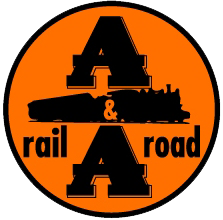 News About Arcade & Attica Railroad
News About Arcade & Attica Railroad
By Virginia Kropf | Daily News Correspondent – August 2, 2012
 Its origin dates back longer than that, having begun when the Pennsylvania Railroad wanted to connect to Buffalo. To do this, they purchased all the small incomplete railroads and linked them together, forming the Buffalo, Attica & Arcade Railroad. In 1880, the line officially opened between Attica and Curriers Corners, where the excursions end today. The rails still in use were first spiked down in 1881 and standardized in 1895 to connect with the Pennsylvania Railroad.
Its origin dates back longer than that, having begun when the Pennsylvania Railroad wanted to connect to Buffalo. To do this, they purchased all the small incomplete railroads and linked them together, forming the Buffalo, Attica & Arcade Railroad. In 1880, the line officially opened between Attica and Curriers Corners, where the excursions end today. The rails still in use were first spiked down in 1881 and standardized in 1895 to connect with the Pennsylvania Railroad.
By 1917, the railroad was being operated by the Buffalo and Susquehanna Railroad, which was thinking of closing it down. This alarmed businessmen along the BA&A who were in need of rail service, and interested parties began to raise money to purchase this section. Stock was sold to farmers, merchants and anyone who was interested. The sum of $79,000 was raised and the Arcade and Attica Railroad Corporation was formed – the corporation which owns the railroad today. A history of the railroad compiled for the anniversary celebration states the railroad has never been blessed with a lot of luck.
Many bankruptcies and numerous washouts took their toll. The largest washout occurred in January 1957 when the Tonawanda Creek flooded, taking several hundred feet of track with it. The stockholders could not afford the $72,000 to repair the tracks and a decision was made to suspend all operations between North Java and Attica. Nearly all the freight business was between Arcade and North Java, so that was not a difficult decision.
The railroad?s freight service has transported milk, cheese, grain, cattle, gasoline, coal and mail. When the Arcade Borden?s plant was in operation, the railroad purchased 13 boxcars to carry Cremora all over the nation.
One of the most unusual operations of the railroad was service to Attica Correctional Facility. Engines of the Erie Railroad, which serviced the Attica area, were too big to get inside the prison, so the job went to the A&A. It is reported no extra passengers ever took the train out of the prison, due to the watchful eye of the inspectors. The A&A was so successful in the 1930s that when the Depression hit, they were able to stay afloat without laying off a single employee.
In 1941, citing the need to reduce expenses, the railroad purchased a 44-ton General Electric diesel, one of the first railroads in the nation to conduct operations with diesel power. The No. 110 diesel, the first new locomotive ever owned by the company, cut expenses to drastically it literally saved the A&A in 1941. The engine is still the “star” of the A&A?s trackside static display.
The decision to try steam-powered passenger excursions was made in the late 1950s, when freight business began to slide. No. 18, a 1920 2-8-0 American steam locomotive was purchased from the Boyne City Railroad in Michigan, along with two Delaware, Lackawanna and Western coaches.
Regular summertime excursions began in August 1962. During the first season of only 27 days, 17,000 paying passengers were carried in only two cars on trains which ran from morning to night.
In 1963, a No. 14 Baldwin 4-6-0 engine was purchased from the Escanaba and lake Superior Railroad, along with more coaches. The A&A has the distinction of being the last private common carrier railroad operating both freight and passenger service.
The vintage World War II diesel No. 112 or the 1920?s steamer No. 18 run on special events, such as the Peter Cottontain Express, Civil War Days, children?s trains, suspense dinner theater rides, wine tasting events, fall foliate tours, Halloween rides and North Pole Express trains.
